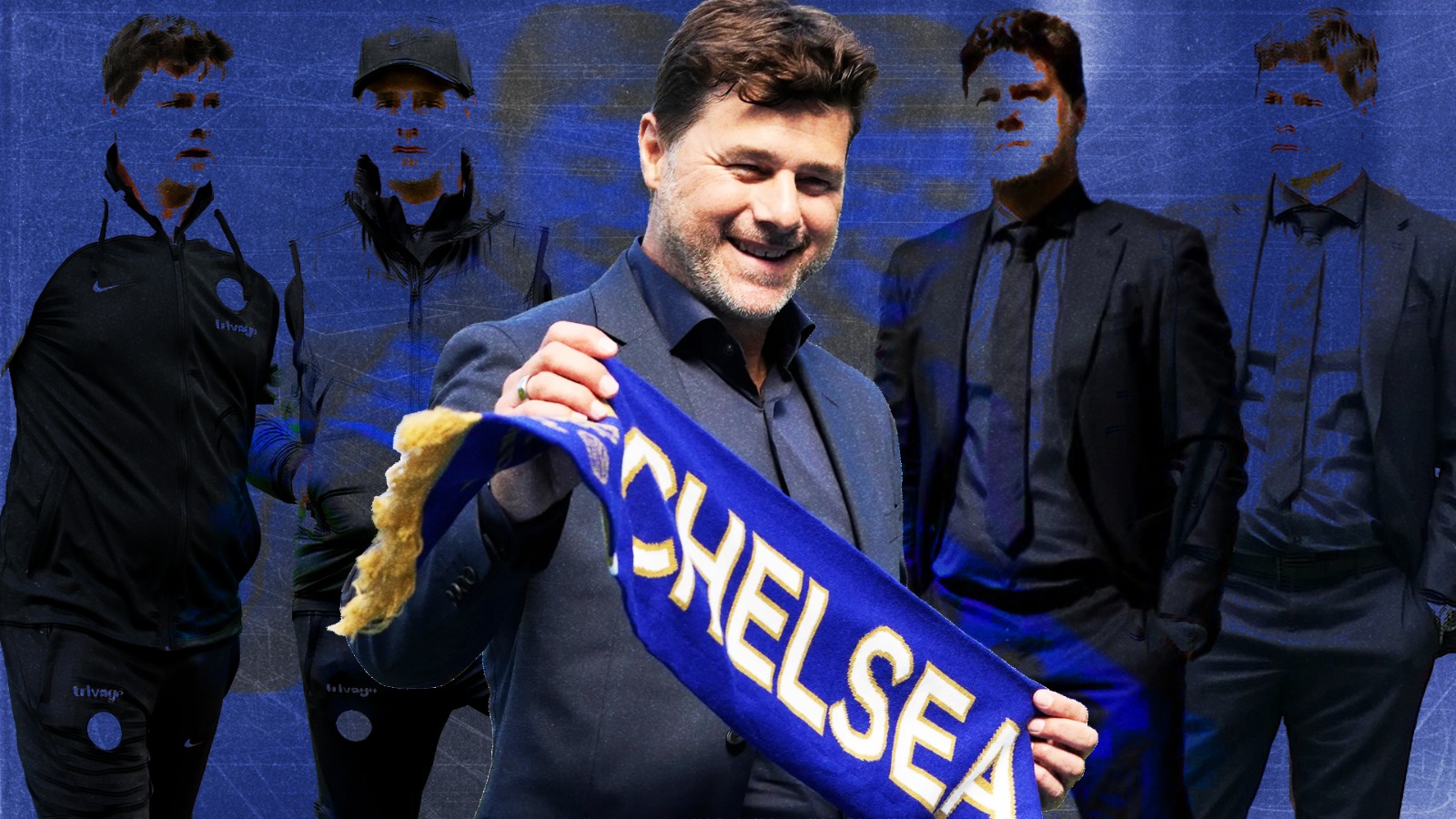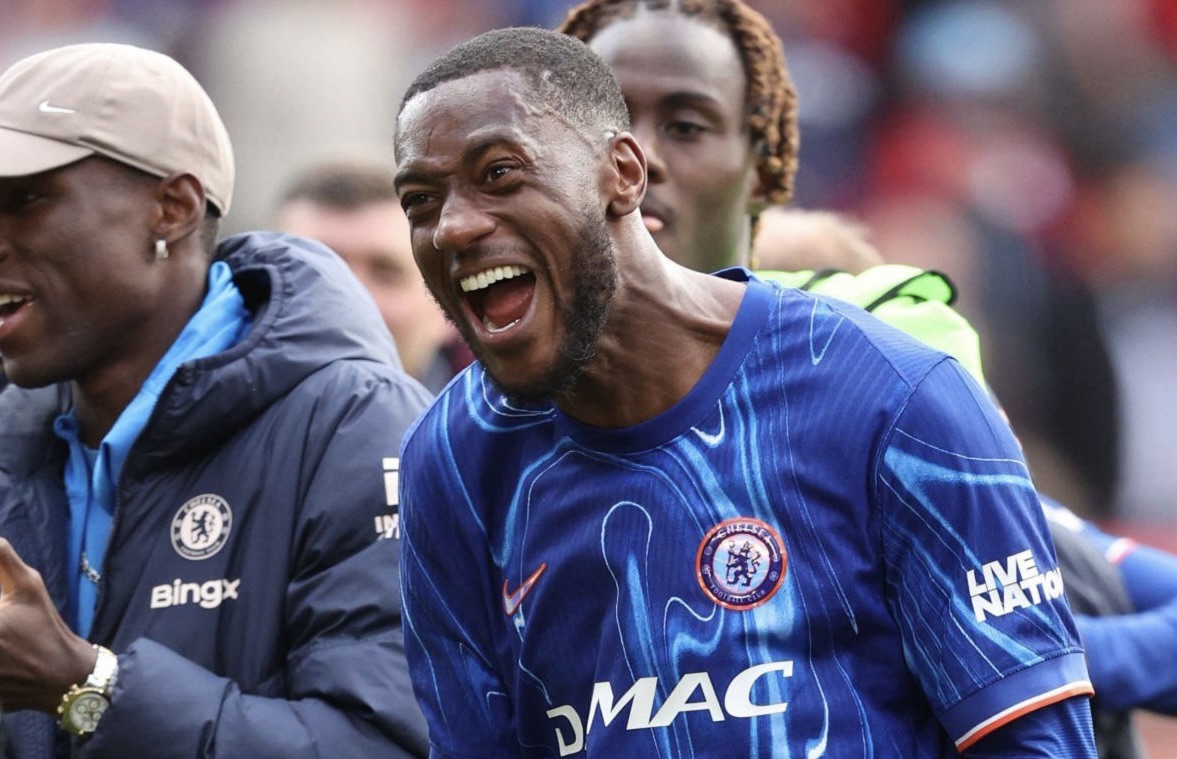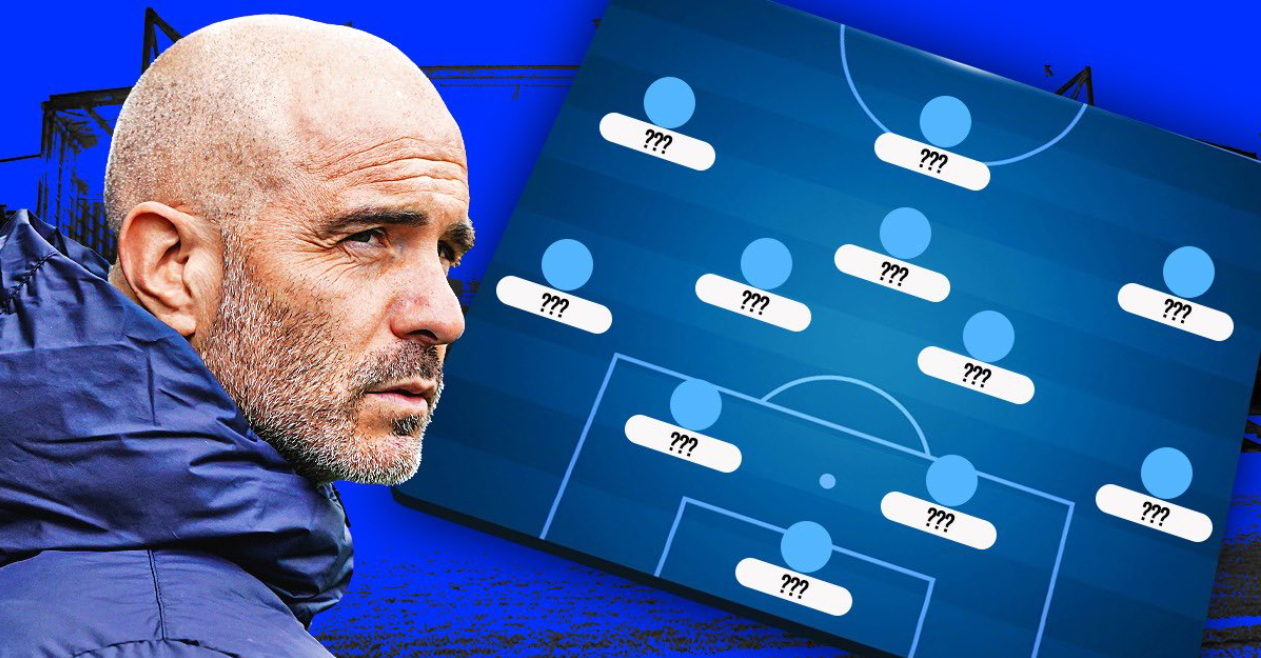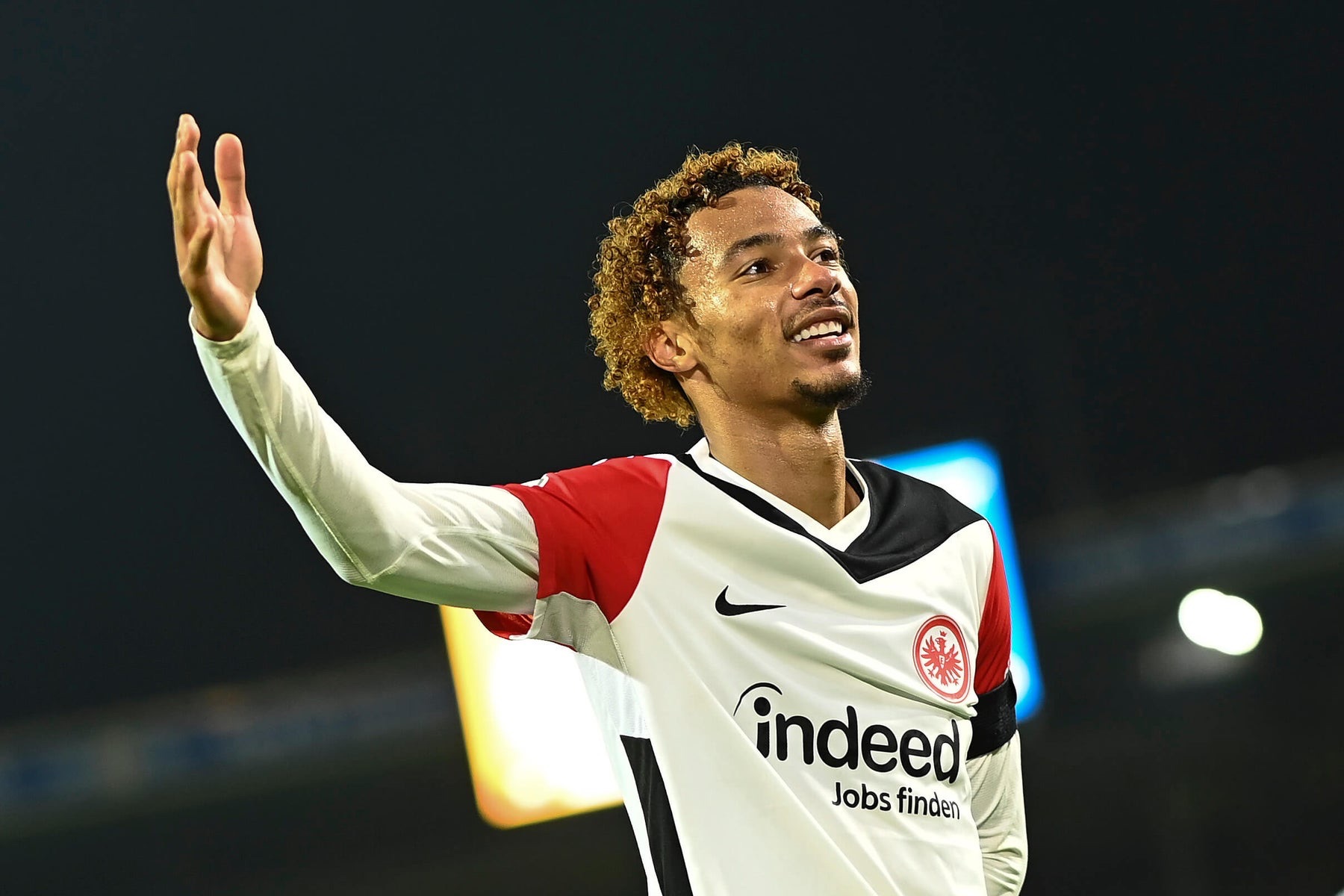Chelsea have started the 2023/24 campaign with a draw, a loss and a win in the first three games under Mauricio Pochettino.
Gathering 4 points in the first 3 games leaves Chelsea sitting 10th in the Premier League currently, and 3 points off of that elusive top 4 spot.
But what have we seen from Pochettino’s Chelsea that is promising? And what have we seen that needs improvement? Let’s take a look.
Freeing up Enzo Fernandez:
One of the biggest positives that has been seen in the first 3 games this season, is the attacking freedom of Enzo Fernandez in Pochettino’s system.
Pochettino has deployed the likes of Conor Gallagher and Moises Caicedo (once he was available), deeper than Enzo Fernandez in order to allow the Argentine to roam forward and get on the ball in more dangerous areas of the pitch.
The aim here is to allow Fernandez to flex his creative muscles, pulling the strings higher up the pitch and using his wonderful passing abilities to progress Chelsea into dangerous areas, and goal-scoring positions.
The numbers align with this tactical decision, as Enzo Fernandez currently leads the Premier League in, Progressive passes (48), Passes into the final third (35), and Through balls (7). Enzo also leads Chelsea in the first 3 games for SCA ( Shot Creating Actions) with a total of 19.
The freedom this system Pochettino is deploying allows Enzo to pick up the ball and create from anywhere on the pitch, meaning he can drop deep to collect the ball, and progress through the means of a long pass, or he can find himself in attacking midfield areas, where he can use his shorter (cuter) passing techniques to split the opposition defence.
Once relationships are more developed in the attacking phases, don’t be surprised to see Enzo Fernadez popping up with more direct goal contributions, in the way of assists and goals, as we have already seen on many occasions the chances Enzo is creating for his attacking counterparts.
Sterling revitalised under Poch?:
The second noticeable positive in these first 3 games of the Premier League season is how Pochettino has fit Raheem Sterling into his system, in a way that gets the best out of the Englishman.
Pochettino has deployed Sterling on the right in his traditional 4-2-3-1 formation, which often rotates in possession to form a 3-2-5 for build up and attacking purposes. However in the last two games, with Malo Gusto coming into the side for Reece James, we have seen slightly more versatility from Sterling.
With the back 3 in possession being formed by Colwill (from left back) and the other two central defenders Thiago Silva and Axel Disasi, this means Gusto in possession has more licence to push forward and provide width on the right hand side.
This gives Sterling a chance to get into central areas, closer to goal and inside the 18 yard box, where he can be dangerous. Sterling himself said after the Luton game that he and Gusto have a good understanding, when he goes wide, Gusto drifts infield, and when he drifts inside, Gusto holds the width.
This tactical fluidity for Sterling to go between the wide areas, and closer to the box, has seen a real upturn in his form, scoring two goals against Luton, and seeing him in more dangerous areas. It also allows Sterling to drift between the two positions (wide and central) to find pockets of space where he can collect the ball and drive at players into the 18 yard box, making penetrating runs, something Pochettino himself pointed out as a huge strength of Sterling’s.
Tilt dynamic positive, with a Negative aspect of the width (so far):
One part of Pochettino’s framework we have seen so far, is playing in close proximity in the first/second phase of build up, allowing for quick interchanges to break through into the attacking phase of play.
This has meant that if the play is being played predominantly down the right hand side for example, the left sided players e.g. Enzo (LCM) Colwill (LB), have shifted over centrally to make the space between Chelsea players minimal, and offer quick, close proximity passing options to progress the ball (creating overloads).
This works really well, as Pochettino has clearly worked on surpassing the opposition press, using numerical overloads in tight spaces and quick passing sequences.
However, something we saw throughout pre season, and at times in the first 3 games, is that Pochettino likes to leave 1 player outside of the “tilt dynamic”, to offer a quick switch of play and isolate a wide man 1v1.
This is a tactical ideology used by many coaches who want to give their wingers wide space to operate in, isolate the opposition fullback, and give their attacker the chance to beat the defender and deliver a cross or get a shot off.
But with the current personnel Chelsea are using, this wide side isolation is often occupied by a fullback, rather than a natural winger, e.g Chilwell and Gusto. This minimises the potential of using this pattern of play, as once these players are isolated 1v1 with the opposition fullback, their first instincts are not to drive at the player and be direct (due to their fullback nature).
To get the most out of this ideology, 1v1 dynamic wingers are needed. If the player who is outside of the “tilt dynamic” is Mykhalio Mudryk and/or Noni Madueke, these players have the speed and direct nature to beat their man and deliver a ball into the box, or even beat their man and get a shot off on goal. This is more natural for wingers than fullbacks, as they have that attacking instinct and desire to go 1v1.
This is something we could see change very soon, as injuries have definitely had an affect on the personnel used thus far. Madueke has only just returned from injury, and did not pick up any minutes during pre-season due to this injury, and Mudryk had been seen playing as the left winger, providing width throughout pre season, and there are some rumours that Pochettino does not currently trust Mudryk in that role completely yet, and wants to continue to develop his understanding.
Another factor that could play into this is the injury of Reece James who is the Chelsea captain, and Chilwell is the vice captain. Therefore with James currently unavailable, maybe the inclusion of Chilwell at left wing has captaincy and leadership connections, with Pochettino not wanting both his Captain and vice captain off the pitch at the same time.
Time will tell, but this is a great piece of tactical framework when used correctly with the right personnel and this is clearly something Pochettino likes the idea of.
Emphasis on Cutbacks:
The last thing I want to point out is the clear emphasis on using cutbacks, rather than looped balls into the box.
This of course is a common type of delivery in Football and makes a lot of sense due to Chelsea’s lack of aerial presence in the box when attacking (Jackson has aerial weaknesses). But, it is worth pointing out the clear focus on cutbacks as a clear goal creation method, and the lack of looped crosses being used.
In the first 3 games this season, Chelsea have looked to penetrate the opposition defence and drag passes back across the box for the oncoming attackers. When watching Chelsea in these final third areas, you can see the likes of Jackson, Sterling, Enzo, Gallagher and even Chilwell are looking to variate their runs at the front and back posts, as well as late arrivals in central areas of the 18 yard box.
In the first two games, we saw many chances for Jackson flashed low across the box, with a few near post misses against Liverpool and West Ham, as well as a few crosses that were delivered into dangerous areas across the box, but attackers just weren’t on the same page.
However against Luton, we saw two goals coming from cutbacks, with the first being an excellent drag back towards the penalty spot, for Raheem Sterling to calmly slot in. The second goal came from a brilliant ball in behind from Enzo Fernadez, and Sterling hitting a first time driven cross into the 6 yard box, for Nicolas Jackson to attack and score an easy tap in.
As I said previously, this is not a revolutionary idea, using cutbacks, but I believe it is important to point out the clear emphasis to keep the balls into the box driven low across the floor, rather than looping high balls into the box to be attacked aerially. Of Course, there are still crosses coming in at head height for Chelsea, but it is significantly lower under Pochettino than other coaches thus far.
Conclusion:
In conclusion, I believe the tactical framework Pochettino is implementing suits the squad he has built and has at his disposal.
The freedom and creativity of Enzo Fernadez being unleashed, a complete striker who can contribute to all facets of play in Nicolas Jackson (didn’t touch on this in detail, but he is offering everything needed in that striker role), getting the best out of the most experienced attacker at the club in Raheem Sterling, and allowing fullbacks to attack and create overloads in wide areas.
I believe in time, we will see the direct wingers implemented into this strategy and this will only help the team thrive even more, being able to beat fullbacks 1v1 and deliver cutbacks into the box, or getting a shot away on goal.
In this short space of time, Pochettino has implemented his philosophy and we have seen an upturn in performances on the pitch since his arrival. I believe in time the results will follow, and everything is on the right trajectory.





